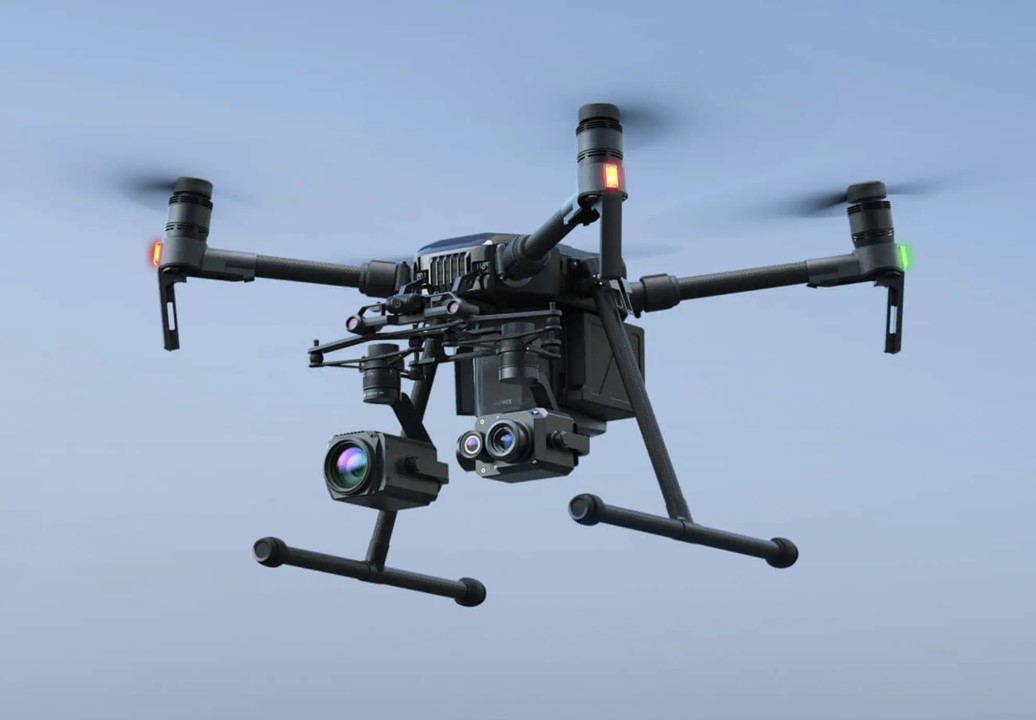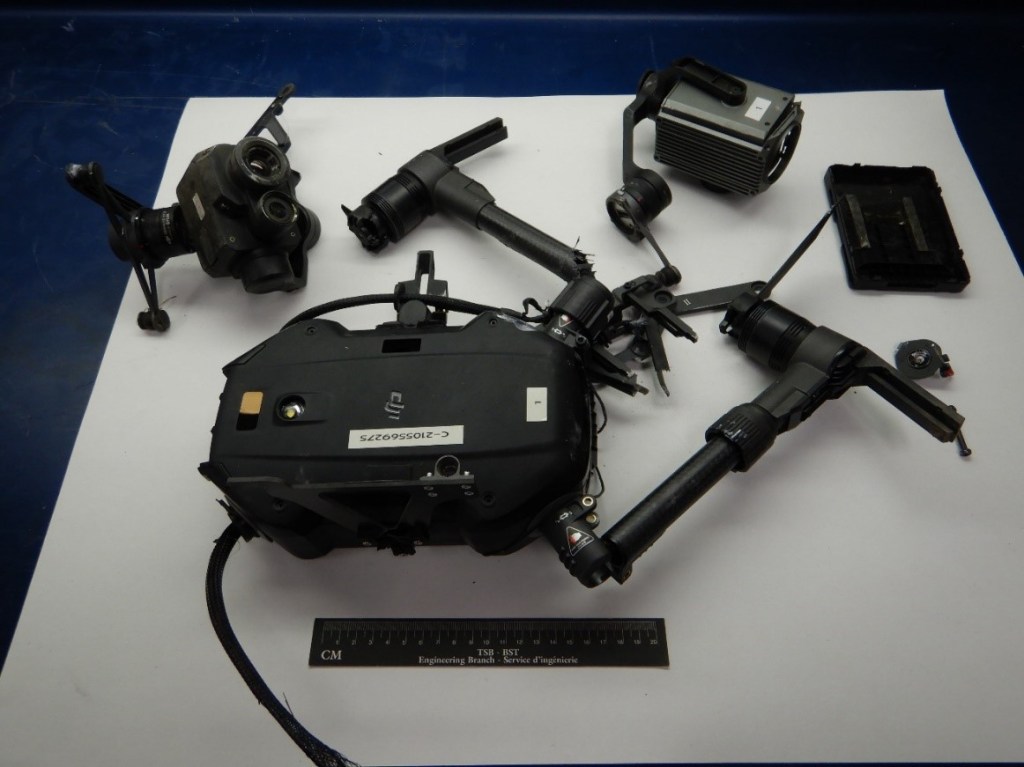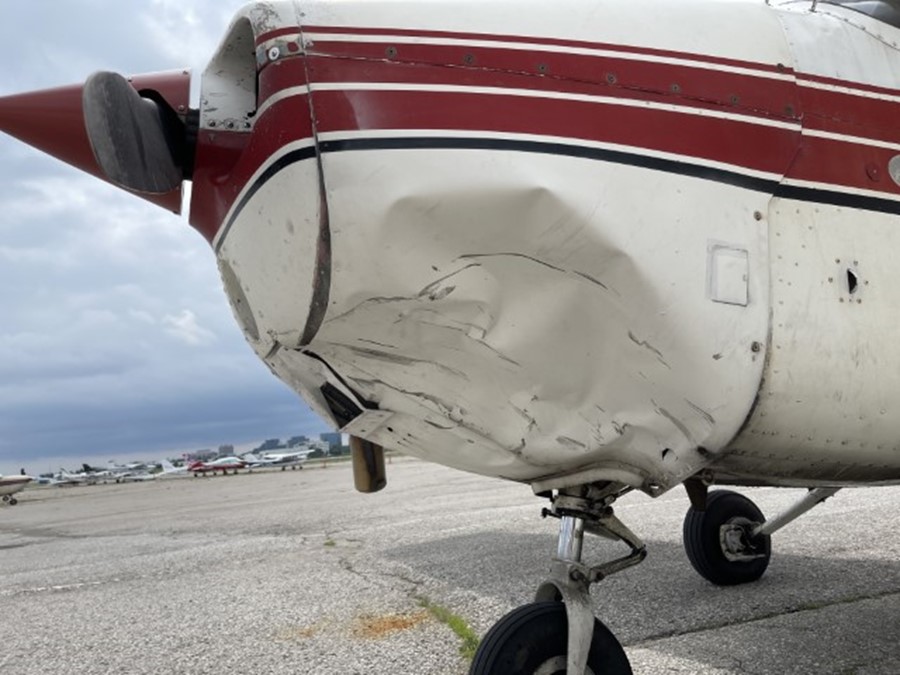
The Transportation Safety Board of Canada has released its report on a 2021 collision between a Cessna 172N plane approaching the Toronto area’s Buttonville Municipal Airport and a police drone operating in the restricted airspace without the required waiver – an incident that sparked controversy when it belatedly became public.
The collision occurred on August 10, 2021, when the plane flown by a student pilot and an instructor struck a drone being operated by the York Regional Police (YRP) on a surveillance mission to locate a possible armed individual in the area. Upon landing, the Cessna was found to have suffered damage to the front left cowl under the propeller, while the YRP’s DJI Matrice M210 was destroyed.
When news of the incident came out 10 days later, some social media commentators took issue with the tardiness of the revelation. They also criticized the difference between the apparent indulgence a police unit operating a drone near an airport runway received compared to the harsh treatment a private pilot would rightly be in for – especially when the crash with a plane was involved.
Read: Canada: Police drone hits plane approaching runway; ‘major damage’ reported
Also questioned was why on earth the police would be flying a drone in such a potentially dangerous spot in the first place, especially without letting regulators, air traffic controllers, and pilots of planes in the area know about it.
Released last week, TSB report A21O0069 answers many of those questions in a series of findings that – while somehow avoiding an accusing tone – lays responsibility for the collision with YRP.

Due to the perceived urgency of getting the drone airborne for aerial visuals to help police on the ground find the possibly armed suspect, the YRP pilot did not take the time to request authorization to fly in the restricted airspace from regulators or air traffic controllers. And because the department had requested DJI to allow its operators to override the blocking safeguards that normally prevent craft from taking off in those prohibited areas, the report noted, the flight could be made out without entering usually obligatory waiver information.
Meanwhile, in contrast to Canadian Aviation Regulations requiring and defining a visual observer as a “trained crew member who assists the pilot in ensuring the safe conduct of a flight under visual line-of-sight,” internal YRP rules merely impose “a member of YRP or another police service who maintains visual observations of an RPA during flight operation.”
In this case, the report notes, the pilot asked any of the assembled officers to perform that role – trained or not – and did not specify the constant eyes-on-the-craft requirement for it. As a result, the findings say:
The officer who was acting as the visual observer was observing the TV display for much of the time that the RPA was airborne and did not see or hear any airborne traffic.
The report also noted that, to gain time in getting the drone aloft, the police pilot undertook a mental pre-flight check list, rather than going through the written procedure as necessary.

With the police drone hovering at 400 feet in the approach path of incoming planes, the report said, the pilots of the Cessna scanning the skies for other craft had little to no chance of spotting the small UAV just below their plane, especially against the clutter of the surrounding urban background.
Read more: Yet another UK near-miss between drone and aircraft
In the wake of the collision with the plane, the report notes York Regional Police altered its internal drone use rules to require police operators to respect a “pre-flight risk assessment tool and an updated Remotely Piloted Aircraft Pilot Checklist.” It now also provides “additional guidance for the role of visual observer, including a quick reference card outlining their roles and responsibilities, as well as a requirement to have a visual observer present for all operational remotely piloted aircraft flights.”
No mention was made about any eventual sanctions being meted out in response to the incident.
FTC: We use income earning auto affiliate links. More.



Comments